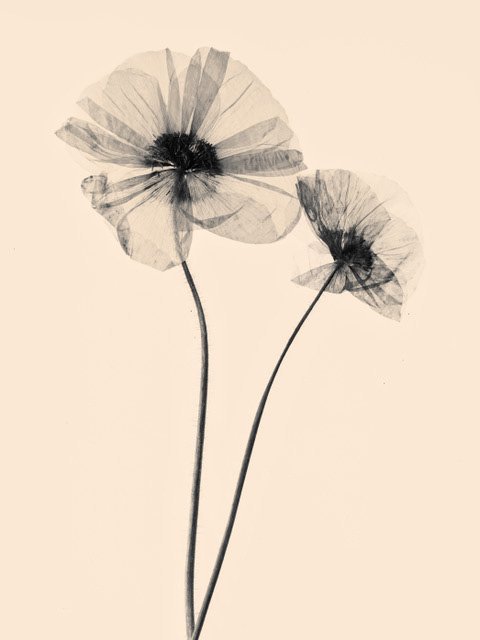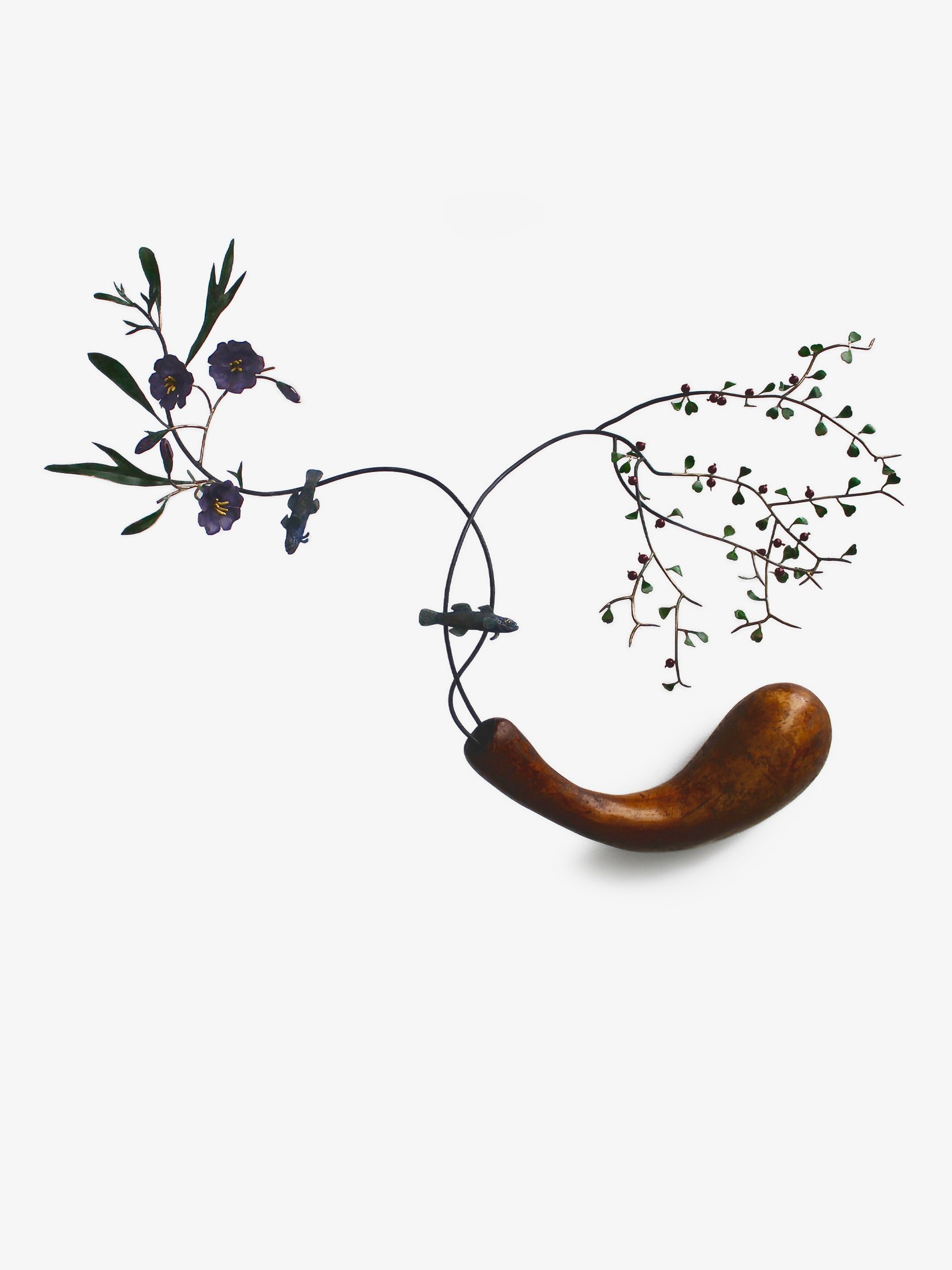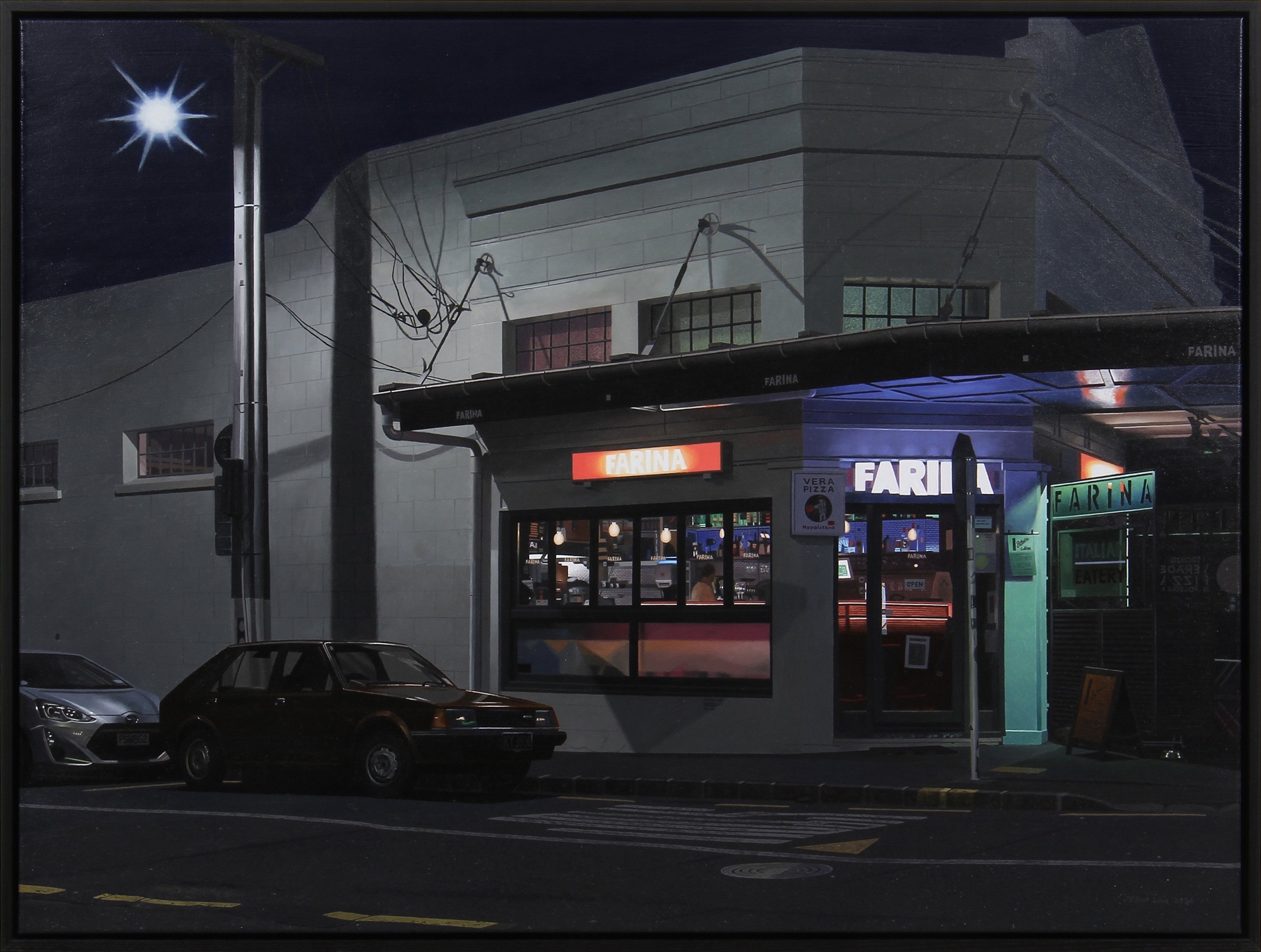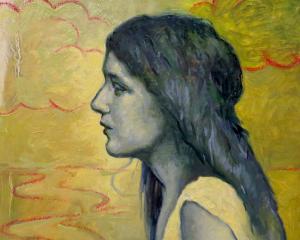
(Hullabaloo Art Space, Cromwell)
In German, "Dazwischen" is to be physically or temporally in between — and in the case of photographer Eric Schusser’s poignant new collection, "Dazwichen | In Between" is a deeply moving narrative of time suspended between life and death. The toned photographs are floral studies — or portraits, with even the most delicate specimens given a place of pride and a dominant presence; their petals are fading to translucency, but the spirit and feeling they evoke remains strong. The images are clearly from the artistic eye and voice of Schusser, a natural extension of his work with black-and-white compositions and the key use of negative space; but anyone familiar with the gorgeous photogenic drawings and floral cyanotypes of his late partner Annemarie Hope-Cross will also see the memory and lingering light of her own artistry, shining through every leaf and line.
With the images printed on cotton fibre paper and the specimens allowed to take full focus, outlined against the starkness of the background, some of the works have the effect of looking up at the flowers through the glare of the sun. Collectively, there’s also very much a reminder of pressed flowers inside a book — the moment of opening a cover or turning a page, and suddenly connecting with a life perhaps long past, a tiny object that two different people found beautiful, possibly decades or even centuries apart. The flowers may no longer be living, but neither are they gone. Behind the shadows, there’s light; and the overall effect is beautiful.

"Painting Places", Sean Beldon
(Gallery Thirty Three, Wānaka)
Sculptor Bing Dawe’s "From Flower to Flower" focuses on the storage of water, the cycles of growth and renewal, and the lessons humankind could learn from the forces of nature around us. From copper, brass, and cast bronze, Dawe has wrought the most deceptively delicate tree branches, an allusion to both the drawing of water from roots to leaves, and the winding lines of rivers and canals on a map.
The artist’s signature eels and fish curve among them, inhabiting the waterways, part of the natural ecosystem; it’s a fascinating effect as inanimate metal gives the illusion of suppressed movement, creatures poised ready to dart away from curious fingers. Most of the works culminate in a functional vessel, another means of carrying and transporting water, but the wiggling lines of one receptacle mimic the sinuous eel; another resembles a seed pod — so many elements of nature intimately intertwined, reliant on one another, and so deeply vulnerable when taken for granted.
It's always a pleasure to see Sean Beldon’s work, too, and his own show "Painting Places" captures memories and impressions from his travels around the country, with his sleek, focused technique. Limiting the colour palette and extraneous detail, Beldon draws the eye to a single moment, a particular view, an unfolding story, instilling every brushstroke — and his viewer — with a pervasive sense of both calm and curiosity. The clean, peaceful lines are cleverly juxtaposed against occasional flashes of drama, in an ominous sky over the mountains, or the north to south (Red Remarkables) rising like flames.

(Milford Galleries, Queenstown)
Using ink, polymer resin, and stainless steel, Russell Moses’s new sculptural series is relatively minimal in design but seemingly almost endless in concept and content. In each work, evenly spaced steel tablets act like portholes, giving glimpses of an abstract setting, the impression of rippling water, rolling clouds, and glittering light. There’s a suggestion of falling rain in the arrangement of the cascading shapes, or of footprints traversing the land, with strategic shading and cut-outs adding narrative layers. There can be something almost synesthetic about Moses’s imagery and patterns, where one sense involuntarily triggers another; I often think of music when looking at his work, as if atmospheric sounds are taking concrete, visible form.
Among the paintings, Elliot Love’s photo-realistic cityscapes combine extraordinary technique and seemingly very ordinary subjects, depicting the sort of scenes we see all the time but rarely notice. A cluster of trees between two suburban houses, the back of an industrial warehouse, a nearly empty carpark, a rusty vehicle left abandoned near the river. The centrally placed cars in each painting represent memories from Love’s younger years, symbolic of steps into adulthood, departures, and inevitable change; many viewers will likely experience unexpected flickers of memory themselves — and the lack of human figures perhaps emphasises how difficult it is, as time marches on, to go back to any place when the people we remember are no longer there.
By Laura Elliott











